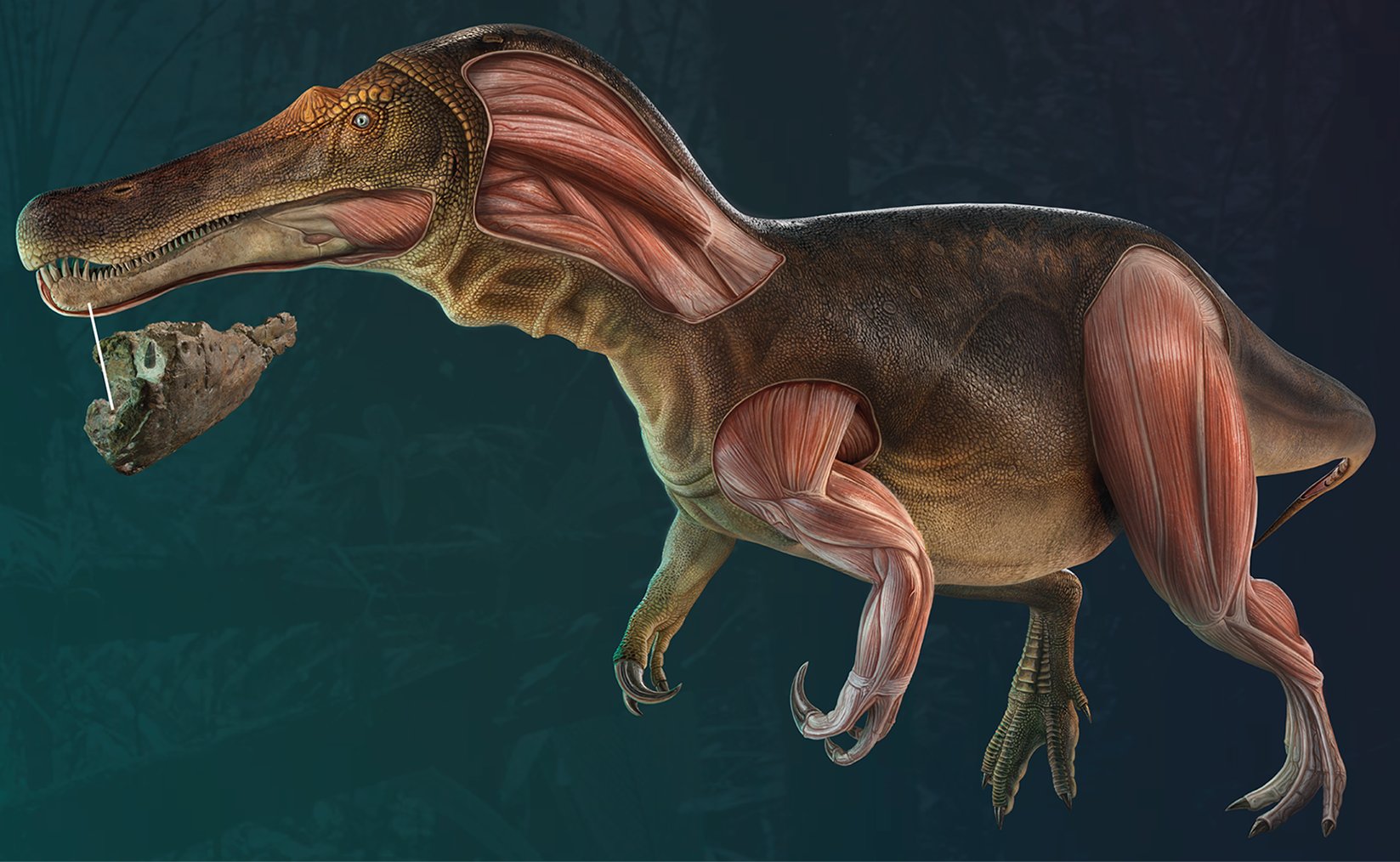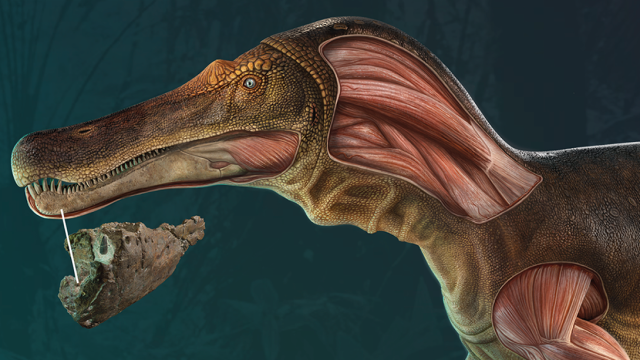A 125 million-year-old fossil found 23 years ago in Portugal is shedding new light on Spinosaurus — a fearsome and enigmatic group of carnivorous dinosaurs that rivaled even tyrannosaurs in terms of size.
Iberospinus natarioi is the latest addition to the small list of known spinosaurs, a group of gigantic semi-aquatic dinosaurs that featured a crocodile-like face and a back adorned with spines. A paper detailing this newly identified dino now appears in PLoS ONE.
The lone specimen, designated ML1190, was previously mistaken for another species of spinosaur, but a reanalysis done by paleontologists Octávio Mateus and Darío Estraviz-López from the NOVA School of Science and Technology in Lisbon, Portugal, has resulted in the declaration of a new genus and species. Paleontologists will be pleased, as it will add to their understanding of spinosaur evolution, phylogeny, and behaviour. Intriguingly, the new research points to western Europe as a possible starting place for spinosaurs, but more evidence is needed.
Spinosaur fossils are quite rare, much to the frustration of paleontologists and children between the ages of three and nine. It’s a shame because these dinosaurs are exceptionally cool, featuring unique physical characteristics and a partially aquatic lifestyle. With bodies reaching 12.6 to 18 metres in length, they’re among the largest carnivores to have ever lived. Conventional thinking has it that spinosaurs gobbled-up fish while wading in shallow waters, but evidence from 2020 suggests some species swam by swinging their tails from side to side. Much about these beasts remains unknown, however, owing to the dearth of fossil evidence.

The generic part of the new name, Iberospinus, is derived from the place where the specimen was found, the Iberian Peninsula, and the specific part of its name, natarioi, is a dedication to its discoverer, Carlos Natário, an amateur fossil collector who uncovered the original set of fossils in 1999. The fossilized spinosaur, dated to the early Cretaceous, was found near Cabo Espichel, Portugal.
Spinosaurus fossils have been found in Africa, the British isles, and the Iberian Peninsula, the latter of which has yielded such species as Vallibonavenatrix cani and Camarillasaurus cirugedae. The ML1190 specimen was pulled from the 125 million-year-old Papo Seco Formation of Portugal and originally assigned to Baryonyx walkeri, a Spinosaurus first described in 1983. The discovery of new bones from the same specimen, plus new insights into spinosaurs, provided the impetus for a reevaluation.
Since the discovery of ML1190 in 1999, “we have recovered parts of the mandible, the scapula, the pubis, one claw from the foot, and several elements of the vertebral column,” Estraviz-López explained to me in an email. What’s more, “we wanted to reassess the fossil considering the explosion of new investigations around spinosaurid dinosaurs,” he added, pointing to related research done in 2019.

Estraviz-López and Mateus used CT scans to study the fossils, conducted comparative analyses with other theropods (two-legged carnivorous dinosaurs), and performed a phylogenetic analysis to sketch out a possible evolutionary family tree. This work led to the realisation that the specimen did not belong to Baryonyx, but to an entirely new species of Spinosaurus.
“It has a unique configuration of nerves in the mandible, as well as a straight tip of the dentary [the back end of the lower jaw], instead of the curved one of Baryonyx or Suchomimus [a spinosaur found in Niger, Africa],” said Estraviz-López. “It also has a bony ridge projection downwards in the pubis and lacks a prominent muscle projection in the scapula [shoulder blade] among several other characteristics.”
The identification of this new dino “reinforces Iberia as a hotspot for spinosaur biodiversity,” with several species now known to live in this region, as the paleontologists wrote in their study. I asked Estraviz-López about the significance of this and how it fits into the overall big picture of Spinosaurus evolution.
“Having six of the oldest genera from the family of spinosaurids in Western Europe makes a good case for an origin sometime during the Jurassic at the region,” he replied. “Yet, until we find undoubtedly Jurassic spinosaurids this is still not set in stone,” he said.
Iberospinus natarioi was not too different from other spinosaurs in terms of its ecology. The two-legged creature likely spent most of its time in or around water, but it would’ve been fine when having to walk on dry land. Stratigraphic and sedimentary evidence suggests this animal lived near an estuary or lagoon with brackish water. But because the “stratigraphy, sedimentology and paleoecology of the site is relatively complex,” Estraviz-López said he “would love to study it in more detail.”
We’re starting to get a fuller picture of these fascinating creatures and their apparent diversity. Paleontologists need to keep on digging for new bones, while also digging for new truths about bones already brought to the surface.
